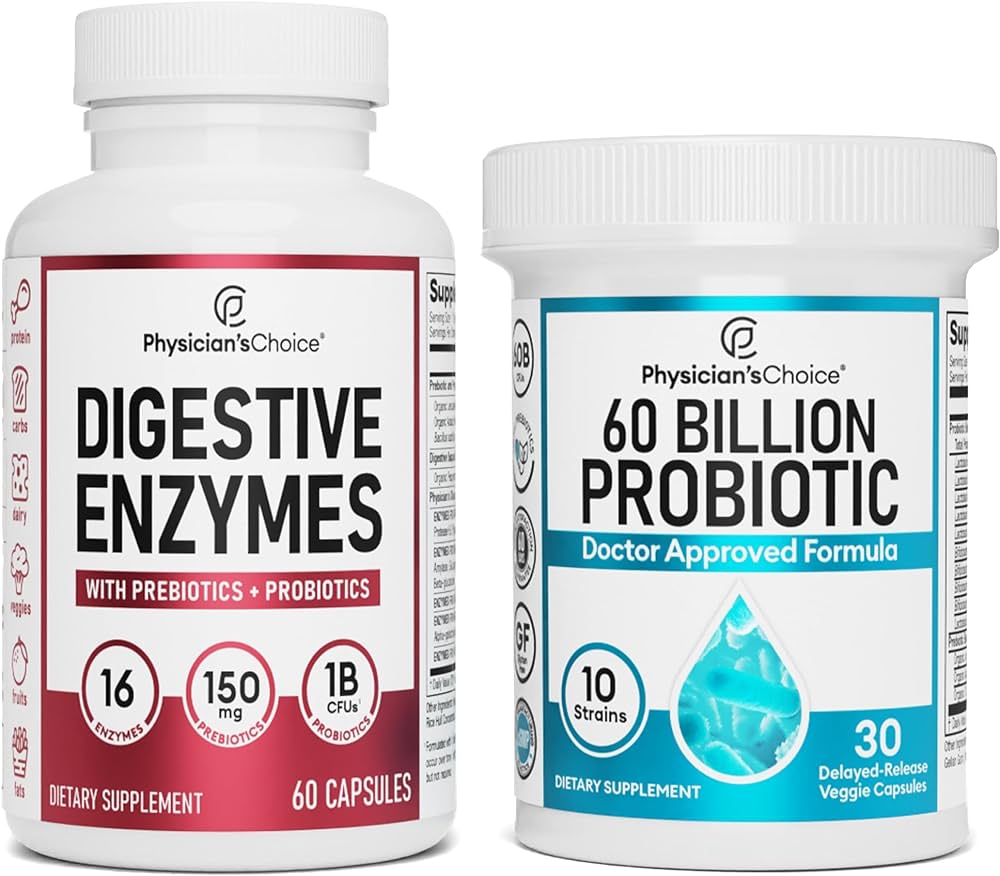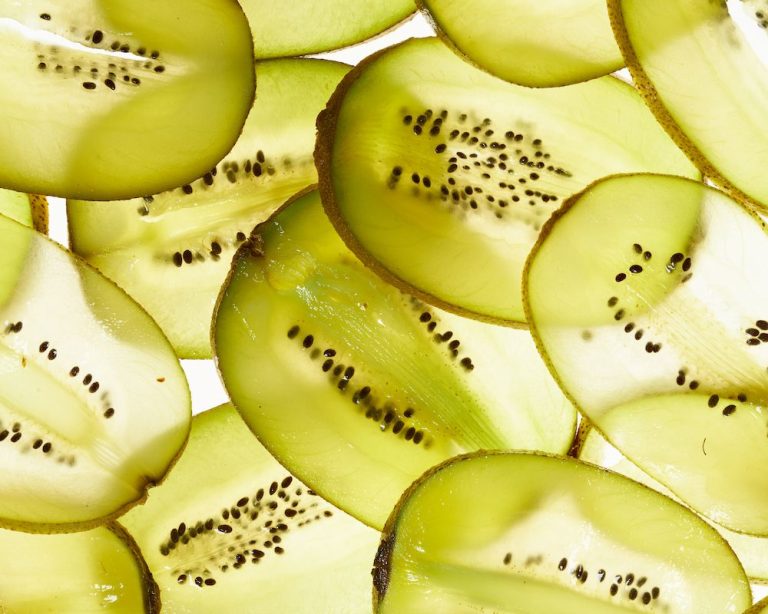9 Prebiotic and Probiotic Combos for Optimal Gut Health and Immunity
Your gut health plays a crucial role in your overall well-being, influencing everything from digestion to immunity. To keep your digestive system in top shape, combining prebiotics and probiotics can be a game-changer. Prebiotics are the food for your beneficial bacteria, while probiotics are the live bacteria that keep your gut balanced.
Finding the best prebiotic and probiotic combination can be overwhelming with so many options out there. We’ve done the research to bring you the top 9 combinations that can help you achieve optimal gut health. Whether you’re looking to improve digestion, boost immunity, or enhance nutrient absorption, these combinations have got you covered.
Criteria for Selecting the Best Prebiotic and Probiotic Combinations
Choosing the best prebiotic and probiotic combinations ensures you maximize the benefits for your gut health. Here are key factors to consider:
Efficacy and Strain Diversity
Ensure the combination has proven efficacy. Look for scientific evidence or clinical studies that support the product’s effectiveness. Also, make sure it contains a diverse range of strains. Different strains offer various benefits, from improving digestion to enhancing immunity. For example, products with a mix of Lactobacillus and Bifidobacterium strains cover a broader spectrum of benefits.
Synergy Between Prebiotics and Probiotics
Select combinations that show synergy between prebiotics and probiotics. Prebiotics enhance the growth of probiotics, making them more effective. Inulin and fructooligosaccharides (FOS) are common prebiotics that work well with many probiotic strains. Synergistic combinations ensure that the beneficial bacteria thrive and colonize your gut, providing maximum health benefits.
Top 9 Best Prebiotic and Probiotic Combinations
Combining prebiotics and probiotics can significantly enhance gut health. Let’s look at the top 9 combinations that offer the best benefits.
Combination 1: Inulin and Lactobacillus Rhamnosus
Inulin and Lactobacillus Rhamnosus form an effective duo. Inulin, a natural fiber, supports the growth of beneficial bacteria. Lactobacillus Rhamnosus boosts immunity and improves digestive health. Together, they can enhance nutrient absorption.
Combination 2: Fructooligosaccharides (FOS) and Bifidobacterium Longum
Fructooligosaccharides (FOS) paired with Bifidobacterium Longum provide powerful support. FOS acts as a food source for beneficial bacteria. Bifidobacterium Longum helps alleviate gastrointestinal issues like irritable bowel syndrome (IBS). This combination aids in maintaining a balanced gut flora.
Combination 3: Galactooligosaccharides (GOS) and Lactobacillus Acidophilus
Galactooligosaccharides (GOS) combined with Lactobacillus Acidophilus are highly effective. GOS fosters the growth of beneficial gut bacteria. Lactobacillus Acidophilus helps reduce bloating and supports overall digestive health. These elements work together to promote a healthy gut environment.
Combination 4: Beta-Glucan and Bifidobacterium Bifidum
Beta-Glucan and Bifidobacterium Bifidum deliver extensive benefits. Beta-Glucan, a soluble fiber, enhances immune response. Bifidobacterium Bifidum supports digestive function and prevents harmful pathogen growth. Their synergy improves gut health and overall immunity.
Combination 5: Resistant Starch and Lactobacillus Plantarum
Resistant Starch and Lactobacillus Plantarum form a robust duo. Resistant starch serves as a prebiotic, feeding beneficial bacteria. Lactobacillus Plantarum helps in reducing inflammation and gut permeability. This combination significantly boosts gut health and functionality.
Combination 6: Pectin and Bifidobacterium Lactis
Pectin combined with Bifidobacterium Lactis can effectively improve gut health. Pectin, found in fruits, acts as a prebiotic fiber. Bifidobacterium Lactis aids digestion and enhances immune function. Together, they’re potent for maintaining a healthy gut microbiome.
Combination 7: Xylooligosaccharides (XOS) and Saccharomyces Boulardii
Xylooligosaccharides (XOS) with Saccharomyces Boulardii offer targeted benefits. XOS promotes the growth of beneficial bacteria. Saccharomyces Boulardii is a probiotic yeast that prevents and treats diarrhea. Their combined effect ensures a healthy and stable gut environment.
Combination 8: Chicory Root Fiber and Lactobacillus Casei
Chicory Root Fiber with Lactobacillus Casei serves a potent combination for gut health. Chicory root fiber is a rich source of inulin. Lactobacillus Casei boosts the immune system and aids digestion. This duo supports a balanced and functional digestive system.
Combination 9: Apple Pectin and Bifidobacterium Breve
Apple Pectin and Bifidobacterium Breve are a beneficial pairing. Apple pectin acts as a prebiotic, nourishing gut bacteria. Bifidobacterium Breve helps reduce inflammation and supports gut health. Together, they provide comprehensive digestive benefits.
Benefits of Using the Best Prebiotic and Probiotic Combinations
Improved Digestive Health
Using prebiotic and probiotic combinations can significantly improve your digestive health. Prebiotics serve as food for the probiotics, helping them flourish and crowd out harmful bacteria. This balance can alleviate symptoms like bloating, gas, and constipation. For instance, Inulin combined with Lactobacillus Rhamnosus can enhance the gut’s overall function and comfort.
Boosted Immune System
Prebiotic and probiotic combinations boost your immune system by enhancing gut flora. A healthy gut environment supports the production of immune cells, which help fend off infections. Fructooligosaccharides (FOS) combined with Bifidobacterium Longum is a powerful duo that strengthens your body’s natural defenses. A balanced gut microbiome also reduces inflammation and promotes overall resilience against pathogens.
Enhanced Nutrient Absorption
Combining prebiotics and probiotics enhances nutrient absorption, ensuring your body gets the most out of the foods you eat. Prebiotics aid in feeding probiotics, which in turn break down and ferment dietary fibers, making essential nutrients more readily available. For example, Galactooligosaccharides (GOS) paired with Bifidobacterium Bifidum can improve your gastrointestinal tract’s efficiency, leading to better absorption of vitamins and minerals like calcium, magnesium, and iron.
How to Incorporate These Combinations into Your Diet
Incorporating prebiotic and probiotic combinations into your diet can be simple and convenient. Here’s how you can make sure your gut health is getting the boost it needs.
Direct Supplements
Taking direct supplements is one of the easiest ways to incorporate these combinations. Look for products that contain both prebiotics and probiotics. Many come in capsule or powder form. Choose supplements that list specific strains, such as Lactobacillus Rhamnosus or Bifidobacterium Longum, combined with prebiotics like Inulin or FOS. A good practice is to follow the recommended dosage on the packaging for optimal benefits.
Dietary Sources
Using dietary sources can be a natural and effective way to get your daily dose of prebiotics and probiotics. Foods like yogurt, kefir, and sauerkraut are rich in probiotics. Combine these with prebiotic-rich foods like bananas, onions, garlic, and asparagus. For example, you can have a yogurt parfait topped with bananas and honey, which supports both probiotic and prebiotic intake. Aim to include a variety of such foods in your meals to maintain a balanced gut microbiota.
Potential Side Effects and Considerations
While combining prebiotics and probiotics can boost your gut health, it’s important to be aware of potential side effects and considerations before starting any new supplement.
Understanding Possible Risks
Gastrointestinal Issues: You might experience gas, bloating, or diarrhea when starting prebiotic and probiotic supplements. These symptoms usually subside as your body adjusts, but starting with a lower dose can help mitigate them.
Allergic Reactions: Certain prebiotic and probiotic strains may cause allergic reactions in some individuals. Watch for symptoms like itching, rash, or swelling, and discontinue use if any allergic reactions occur.
Infections: Although rare, people with weakened immune systems might be at a higher risk of developing infections. Always make sure your probiotics are sourced from reputable brands to minimize this risk.
When to Consult a Healthcare Provider
Pre-existing Health Conditions: If you have underlying health conditions like Crohn’s disease or ulcerative colitis, consult your healthcare provider before taking prebiotic and probiotic combinations. They can help determine the safest and most effective approach for your condition.
Pregnancy and Breastfeeding: Pregnant and breastfeeding women should speak to their healthcare provider before using these supplements to ensure they are safe for both mother and child.
Medication Interactions: Some prebiotics and probiotics can interact with medications, such as antibiotics or immunosuppressants. Always check with your healthcare provider to avoid any adverse interactions.
Conclusion
Prioritizing your gut health with the right prebiotic and probiotic combinations can significantly boost your digestion and immunity. While combinations like Inulin with Lactobacillus Rhamnosus and FOS with Bifidobacterium Longum offer promising benefits, it’s crucial to be aware of potential side effects. Always consult with a healthcare provider before beginning any new supplement regimen, particularly if you have underlying health conditions or are pregnant, breastfeeding, or on medication. Taking these steps ensures you can safely and effectively enhance your overall well-being.
Frequently Asked Questions
What are prebiotics and probiotics?
Prebiotics are non-digestible fibers that feed beneficial gut bacteria, while probiotics are live beneficial bacteria that help maintain gut health.
How do prebiotics and probiotics improve digestion?
Prebiotics and probiotics support the growth of healthy gut bacteria, which aid in breaking down food, enhancing nutrient absorption, and stabilizing gut health.
What are some effective combinations of prebiotics and probiotics?
Effective combinations include Inulin with Lactobacillus Rhamnosus and Fructooligosaccharides (FOS) with Bifidobacterium Longum.
Are there any side effects of taking prebiotics and probiotics?
Possible side effects include gastrointestinal issues, allergic reactions, and infections. Always consult a healthcare provider before starting.
Who should be cautious about using prebiotics and probiotics?
Individuals with underlying health conditions, pregnant or breastfeeding women, and those taking medications should consult a healthcare provider prior to use.
Can you take prebiotics and probiotics together?
Yes, taking both together can provide synergistic benefits to gut health by supporting and enhancing beneficial bacteria growth and activity.
How long does it take to see benefits from prebiotics and probiotics?
Improvements can vary, but many people notice positive changes in digestion and overall well-being within a few weeks of consistent use.
Are prebiotics and probiotics safe for everyone?
Generally, they are safe for most people but those with compromised immune systems or severe illnesses should consult a healthcare provider before use.






